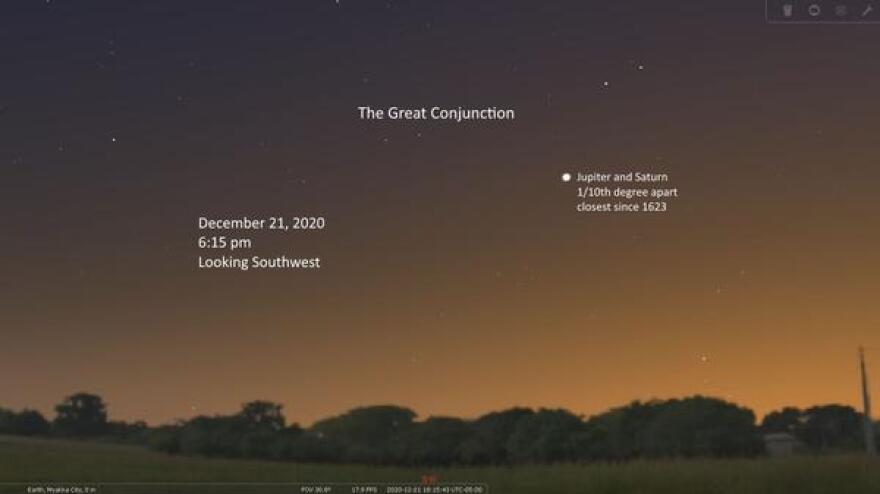With the Winter Solstice on Monday comes what astronomers are calling the Great Conjunction.
That night, which is, coincidentally, the longest night of the year, Jupiter and Saturn will be the closest they’ve been to each other in 400 years or so.
And as if that weren’t amazing enough, WJCT New’s resident SkyGuy, Tom Webber, said you won’t need any special equipment to see this rare celestial event.
“Use your eyes. Go outside. The planets, Jupiter and Saturn are very, very bright. You'll have no trouble seeing the conjunction happening. In fact, every night now you can see them coming just a little bit closer and closer together every night.”
If you’ve got a pair of binoculars you might be able to see one or two of Saturn’s many moons, according to Webber.
And if you’ve got a telescope - well, Monday’s Great Conjunction will be the first time ever that both planets can be seen in the same field of view.
But that’s only if the weather cooperates.
Skies are expected to be clear Friday night and partly cloudy Saturday, Sunday and Monday nights.
A constantly updated forecast is available on WJCT News' weather page.
Contact reporter Cyd Hoskinson at choskinson@wjct.org, 904-358-6351 and on Twitter at @cydwjctnews.


